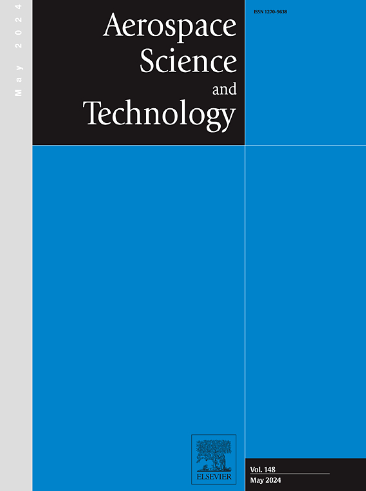Design, analysis, and development of a flexible positioning and vibration isolation integrated hexapod
IF 5.8
1区 工程技术
Q1 ENGINEERING, AEROSPACE
引用次数: 0
Abstract
To achieve high-precision control of the primary mirror shape for a segmented space telescope (SST), a Flexible Positioning and Vibration Isolation Integrated Hexapod (FPVI hexapod) has been proposed, which can achieve high-precision positioning and vibration isolation for mirror segments. First, flexure hinges and flexure membranes with complementary flexibility were designed based on the constraints of the motion degrees of freedom (DOF), and the compliance characteristics of flexure hinges based on the quadratic rational Bézier curves with different numbers of sensitive axes were modeled. Kinematic and dynamic models of the FPVI hexapod, considering the axis configuration of flexure hinges and parasitic stiffness, were established. Next, a rigid-flexible coupled mechatronic co-simulation system was developed to verify the correctness of the kinematic model of the FPVI hexapod. Finally, a prototype and experimental system were constructed to validate the positioning and vibration isolation performance of the FPVI hexapod. The experimental results show that the resolution of translation and rotation motions can reach 20 nm and 0.1 arcsec, respectively. The repeatability of translation and rotation motions are at least 37.88 nm and 0.248 arcsec, respectively. Furthermore, under active vibration isolation, resonance peaks caused by the FPVI hexapod in all directions within the 2Hz-100 Hz frequency range can be effectively suppressed. The designed FPVI hexapod can be used for SST primary mirror shape adjustment and maintenance.
柔性定位与隔振集成六足架的设计、分析与开发
为实现分段空间望远镜(SST)主镜形状的高精度控制,提出了一种柔性定位与隔振集成六足架(FPVI),该六足架可实现对镜段的高精度定位与隔振。首先,基于运动自由度约束设计了具有互补柔性的柔性铰链和柔性膜,并基于具有不同敏感轴数的二次有理b ziier曲线对柔性铰链柔度特性进行了建模;建立了考虑柔性铰链轴线构型和寄生刚度的FPVI六足机构运动学和动力学模型。其次,开发了刚柔耦合机电联合仿真系统,验证了FPVI六足机构运动学模型的正确性。最后,搭建了样机和实验系统,验证了FPVI六足架的定位和隔振性能。实验结果表明,平移和旋转运动的分辨率分别可以达到20 nm和0.1 arcsec。平移和旋转运动的重复性分别至少为37.88 nm和0.248 arcsec。此外,在主动隔振的情况下,FPVI六脚在2hz - 100hz频率范围内各方向产生的共振峰都能得到有效抑制。所设计的FPVI六足架可用于SST主镜的形状调整和维护。
本文章由计算机程序翻译,如有差异,请以英文原文为准。
求助全文
约1分钟内获得全文
求助全文
来源期刊

Aerospace Science and Technology
工程技术-工程:宇航
CiteScore
10.30
自引率
28.60%
发文量
654
审稿时长
54 days
期刊介绍:
Aerospace Science and Technology publishes articles of outstanding scientific quality. Each article is reviewed by two referees. The journal welcomes papers from a wide range of countries. This journal publishes original papers, review articles and short communications related to all fields of aerospace research, fundamental and applied, potential applications of which are clearly related to:
• The design and the manufacture of aircraft, helicopters, missiles, launchers and satellites
• The control of their environment
• The study of various systems they are involved in, as supports or as targets.
Authors are invited to submit papers on new advances in the following topics to aerospace applications:
• Fluid dynamics
• Energetics and propulsion
• Materials and structures
• Flight mechanics
• Navigation, guidance and control
• Acoustics
• Optics
• Electromagnetism and radar
• Signal and image processing
• Information processing
• Data fusion
• Decision aid
• Human behaviour
• Robotics and intelligent systems
• Complex system engineering.
Etc.
 求助内容:
求助内容: 应助结果提醒方式:
应助结果提醒方式:


